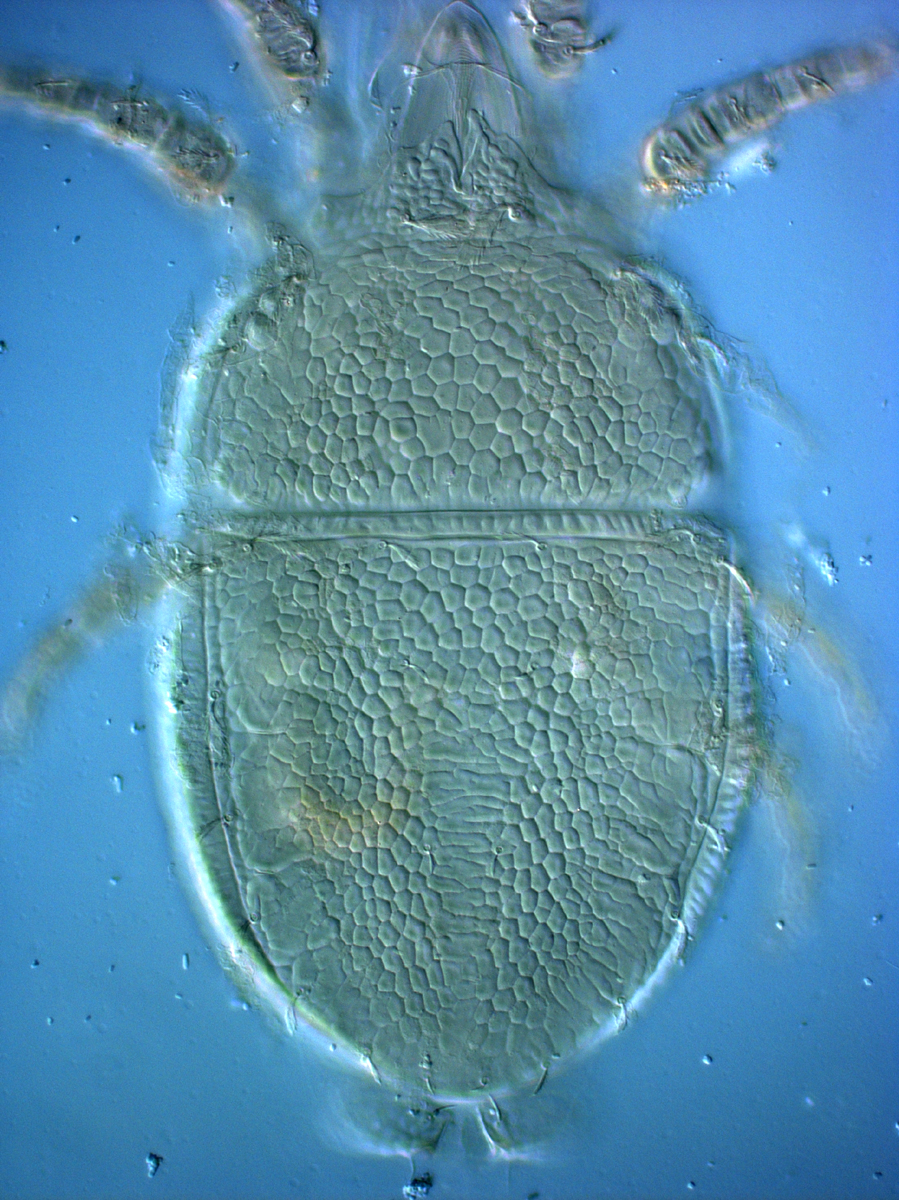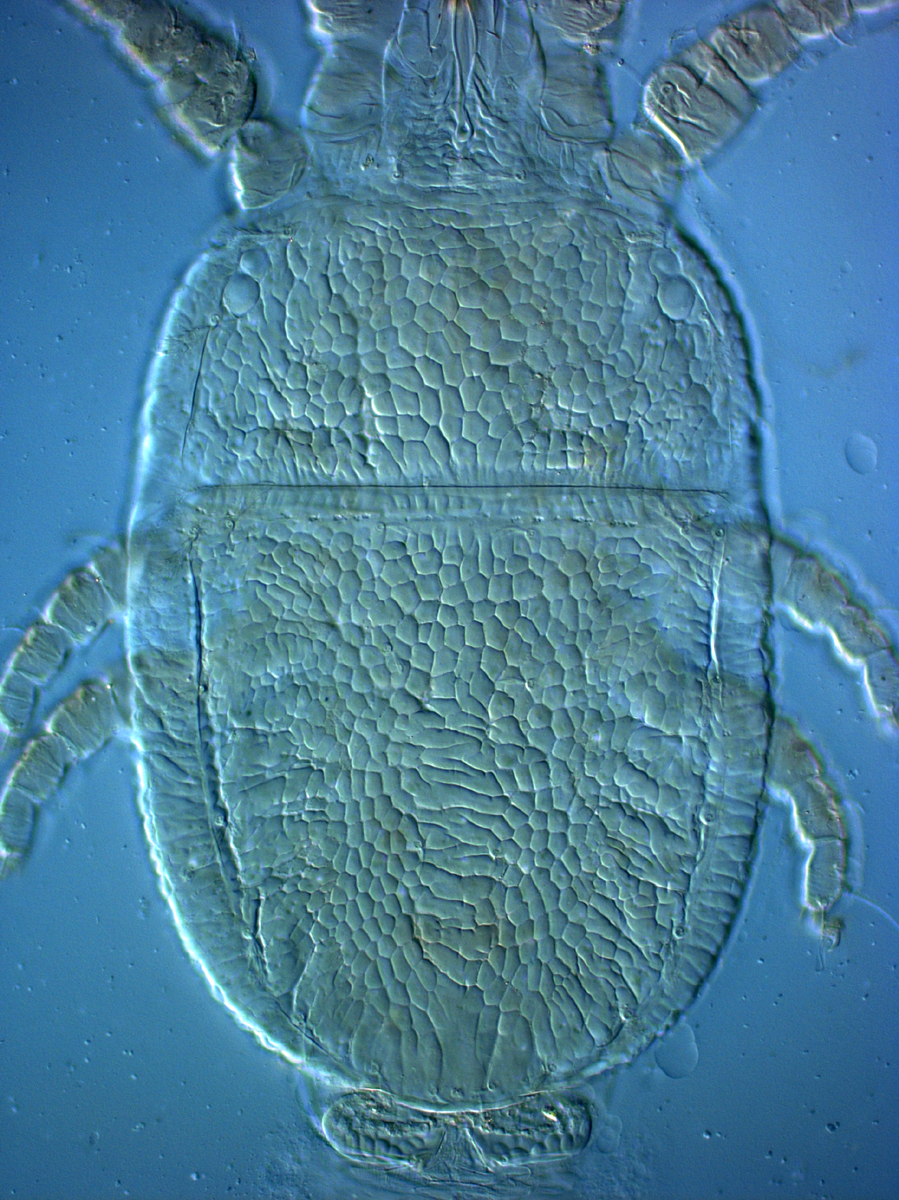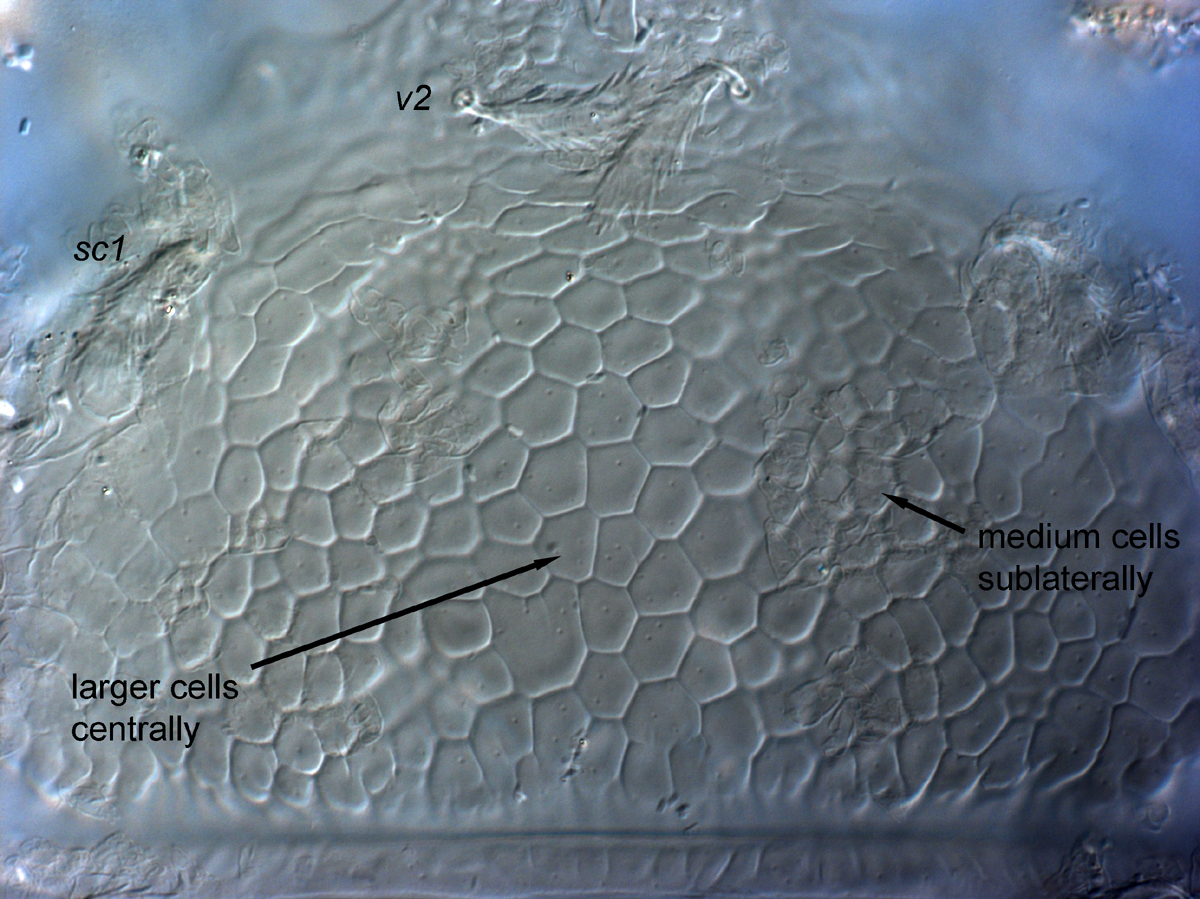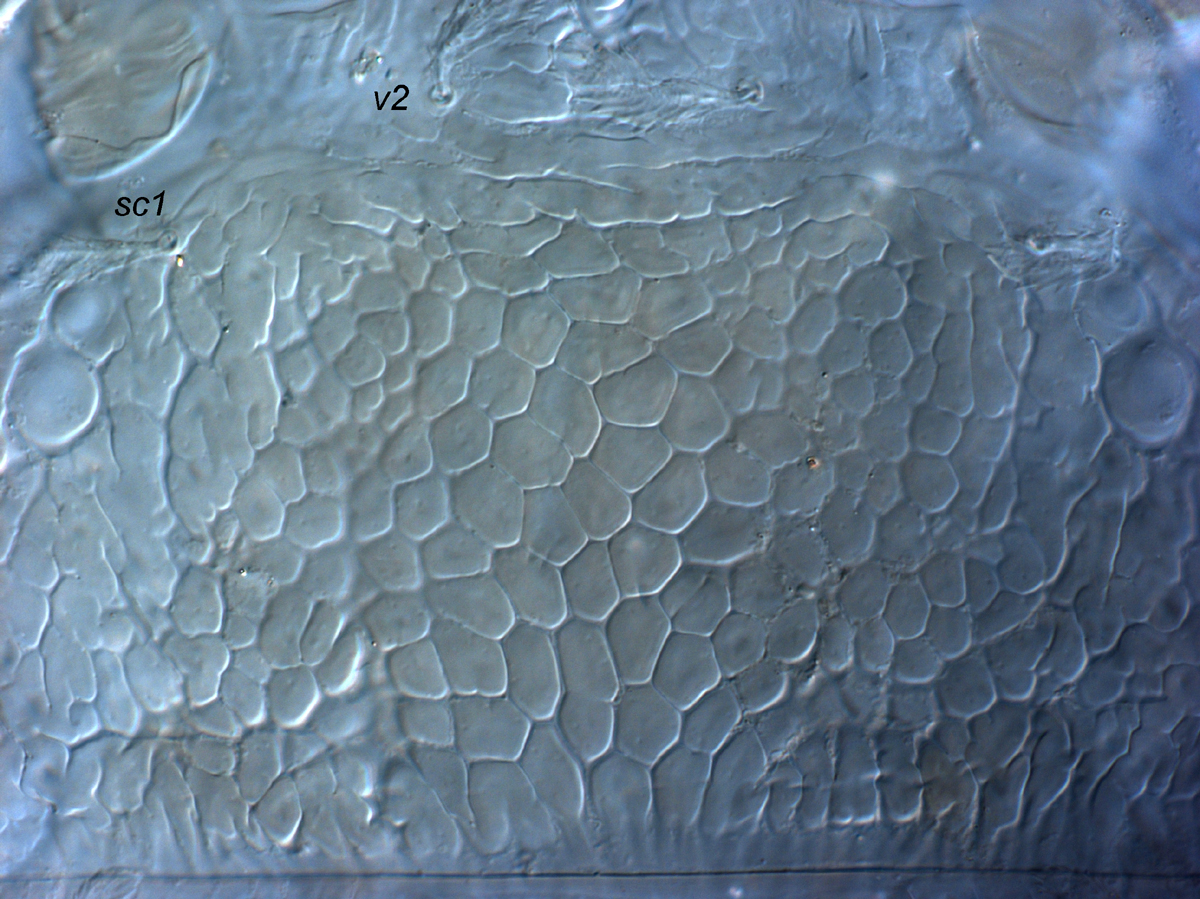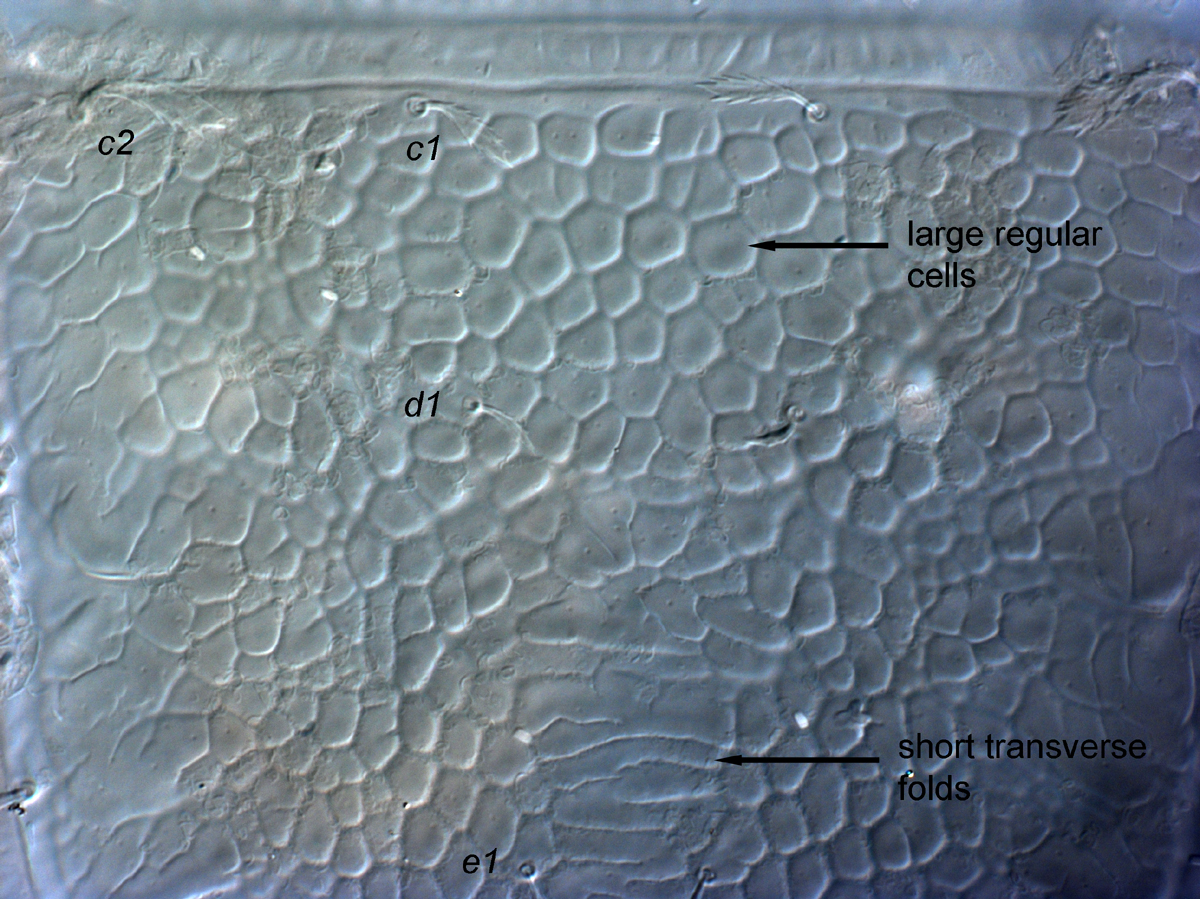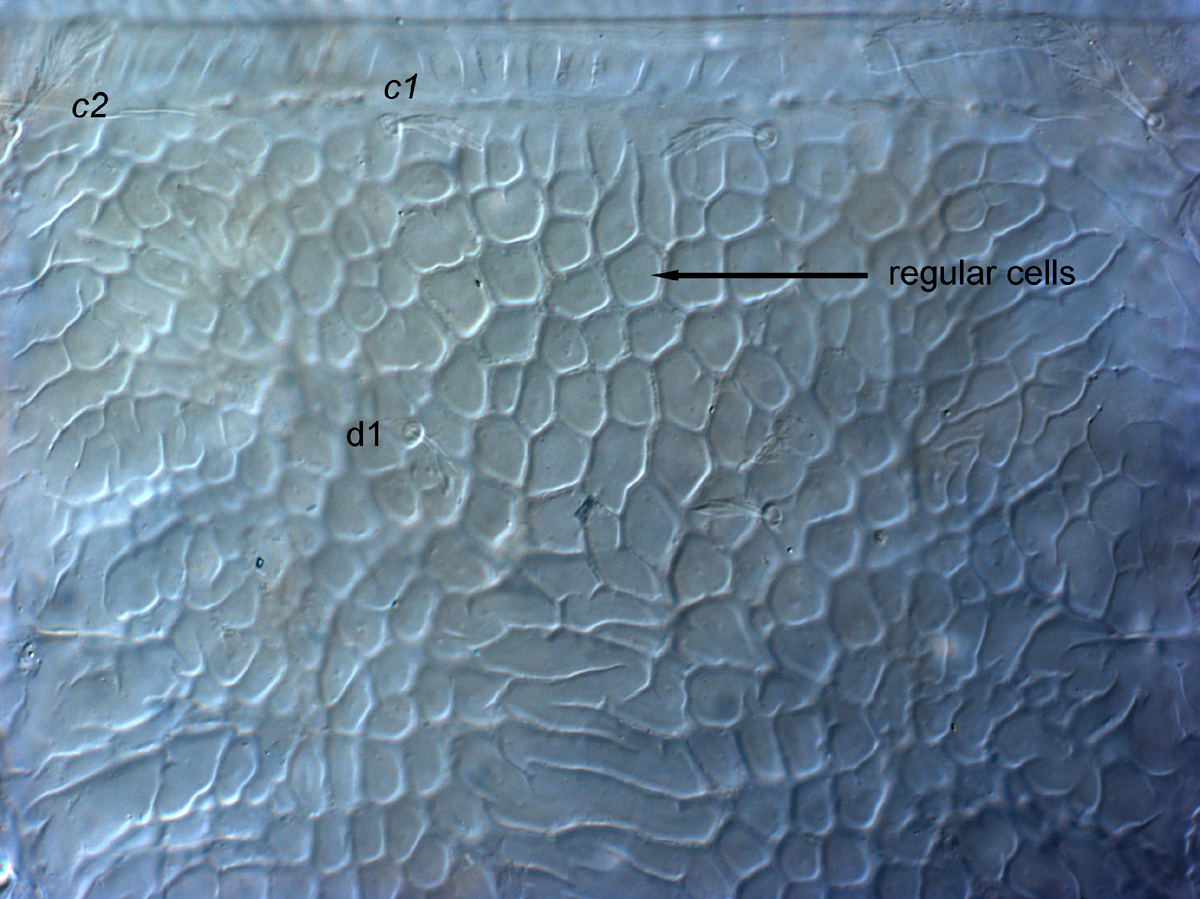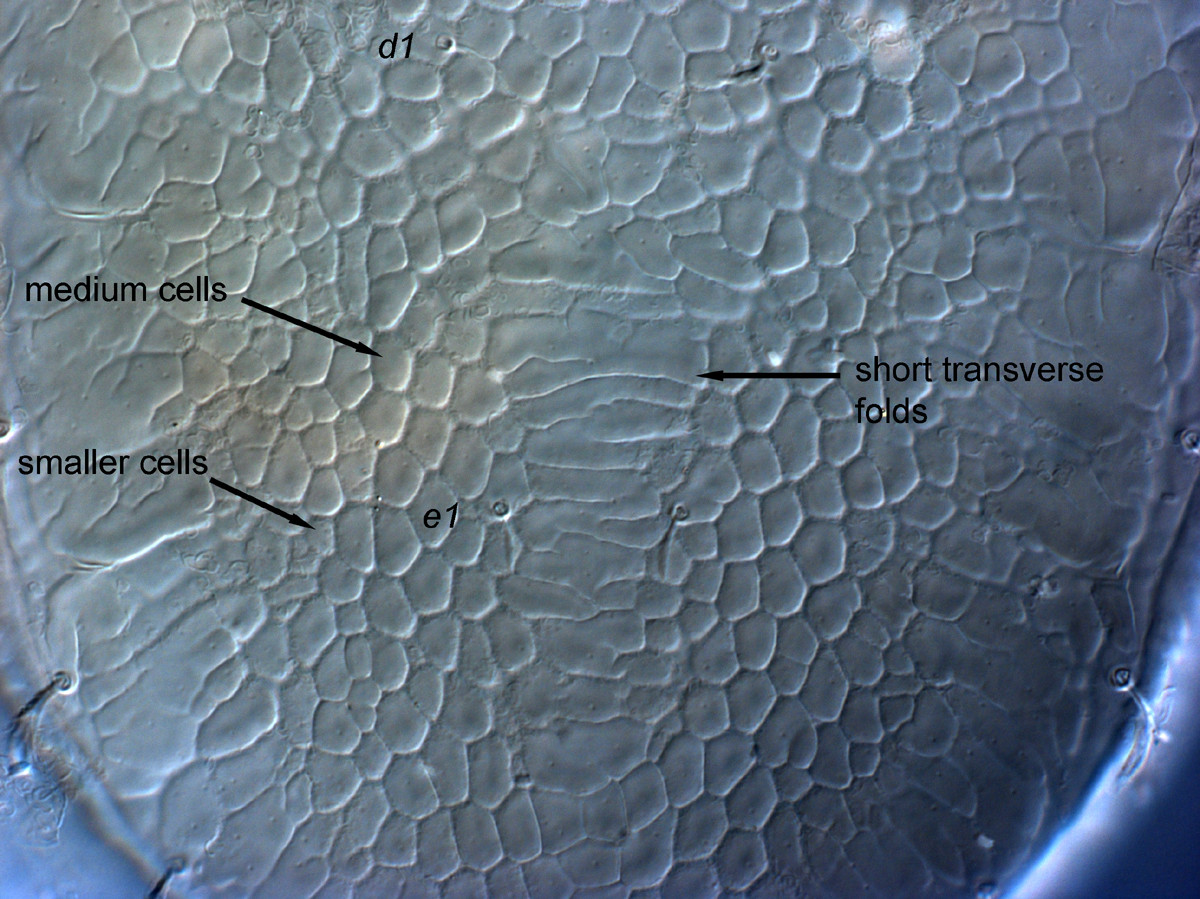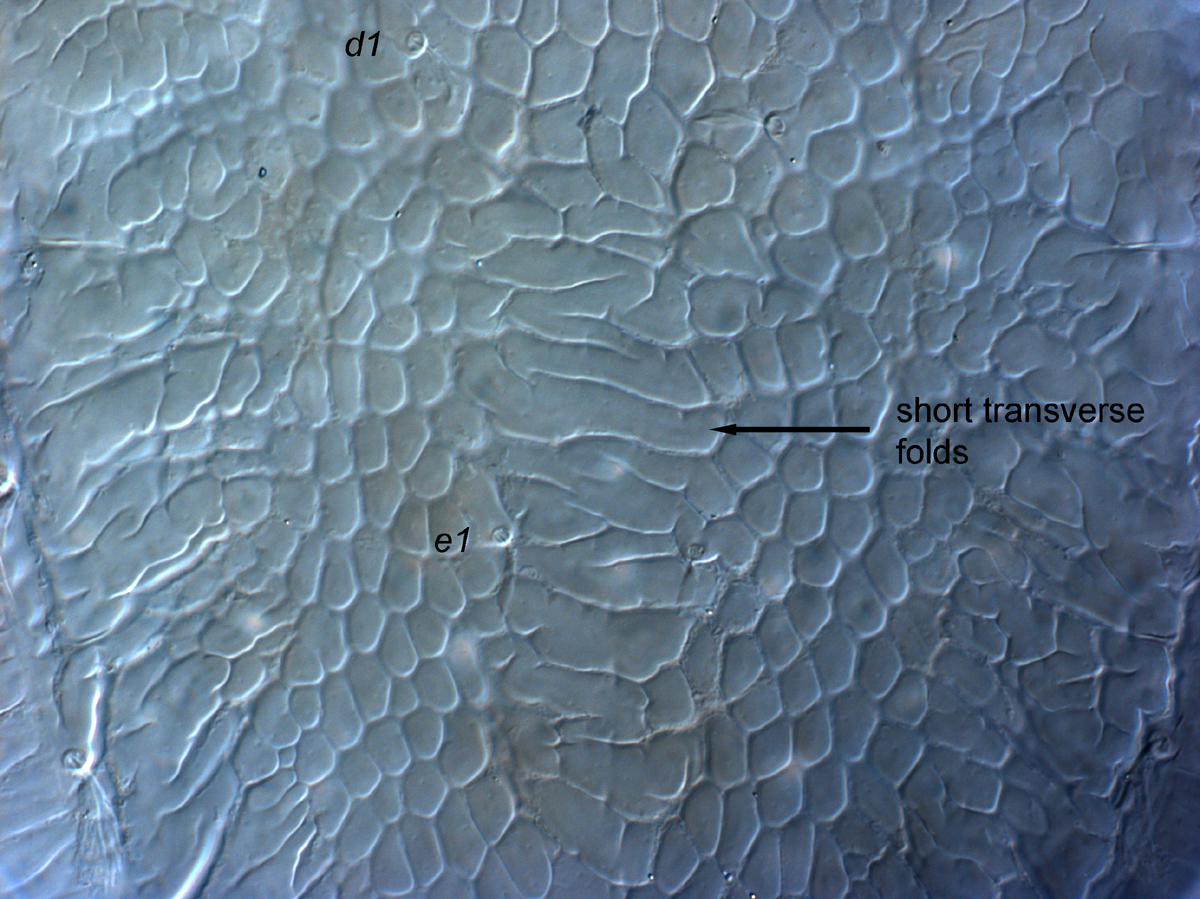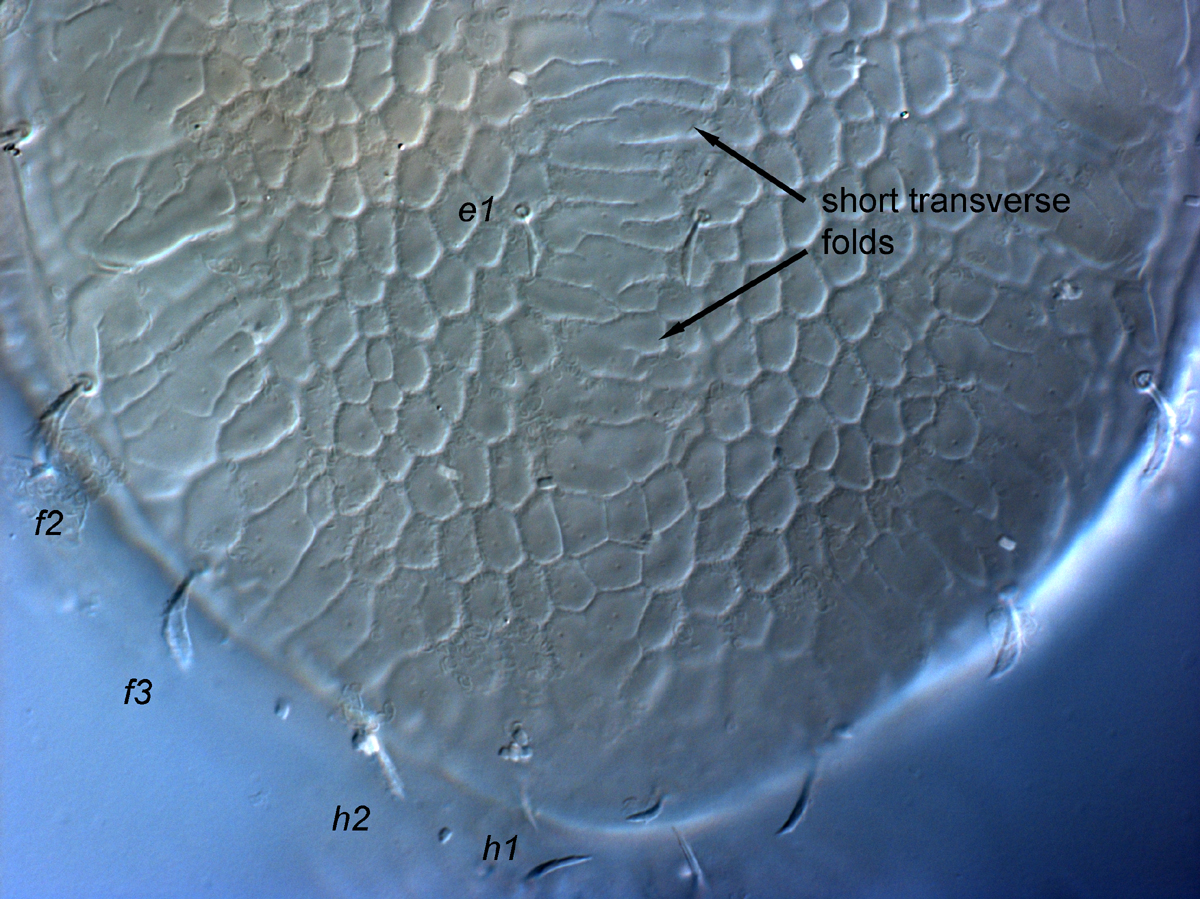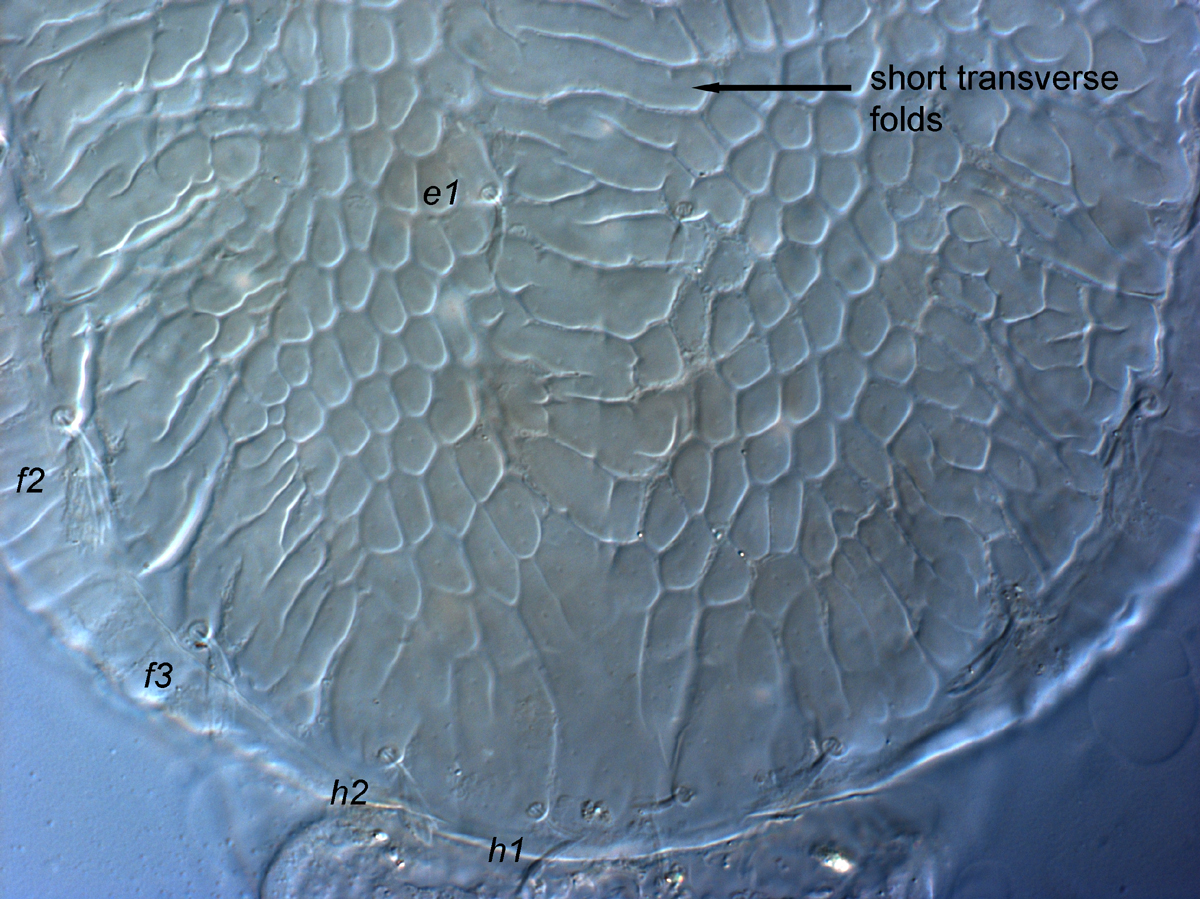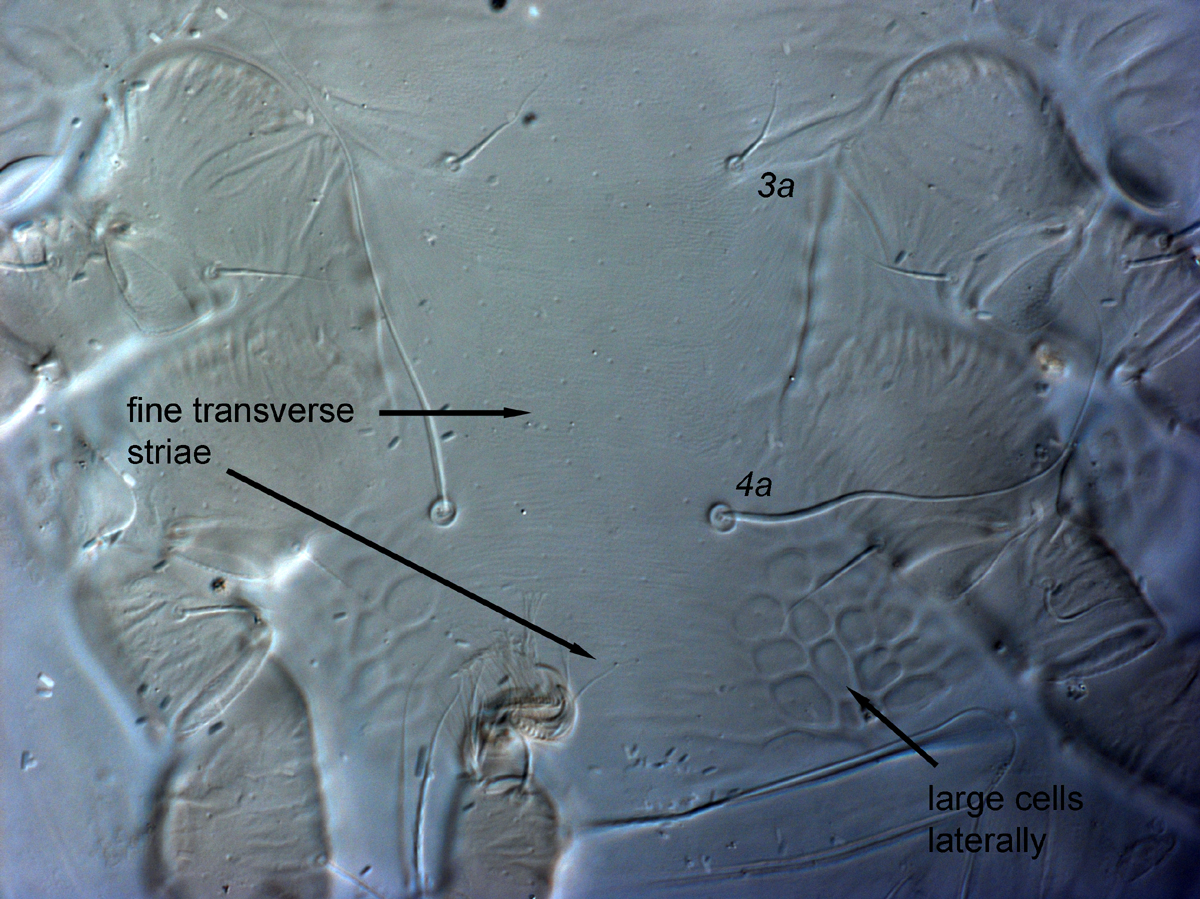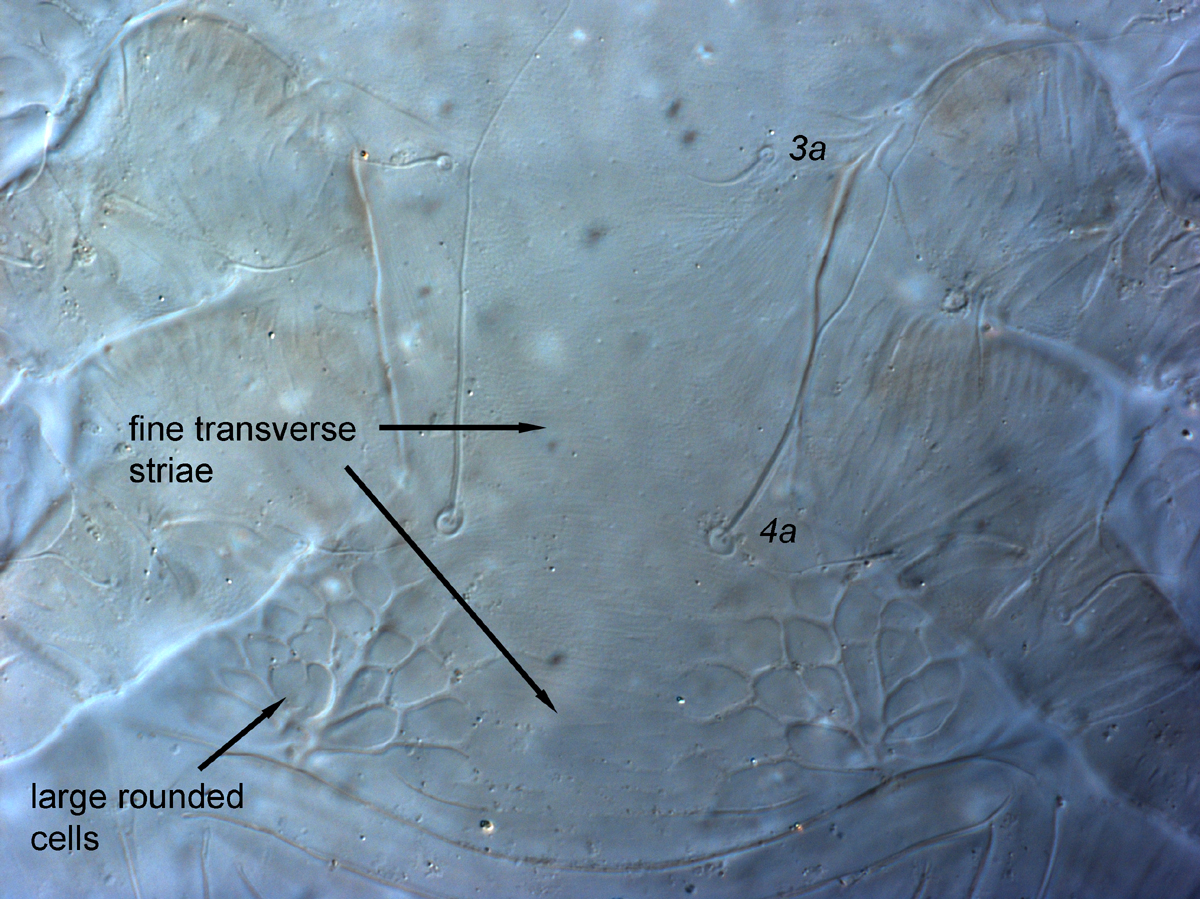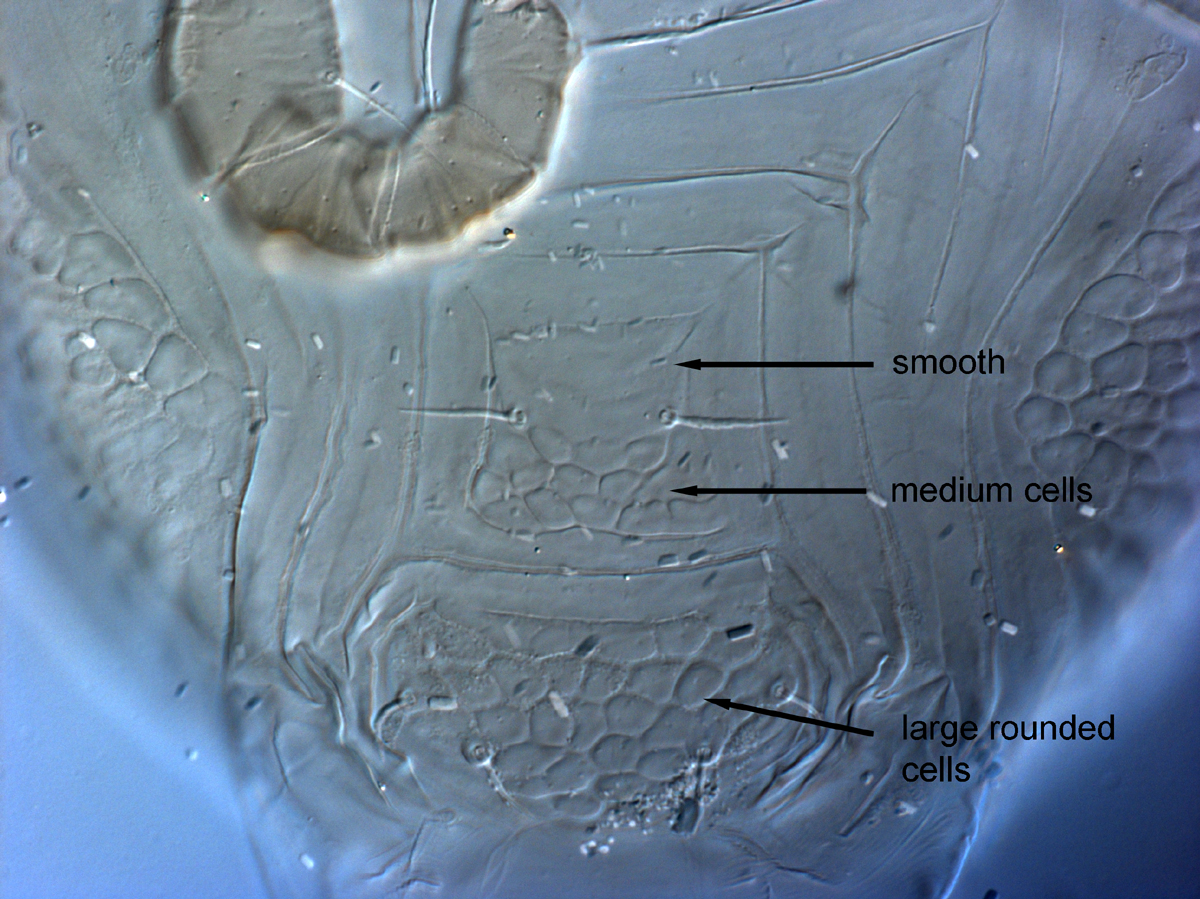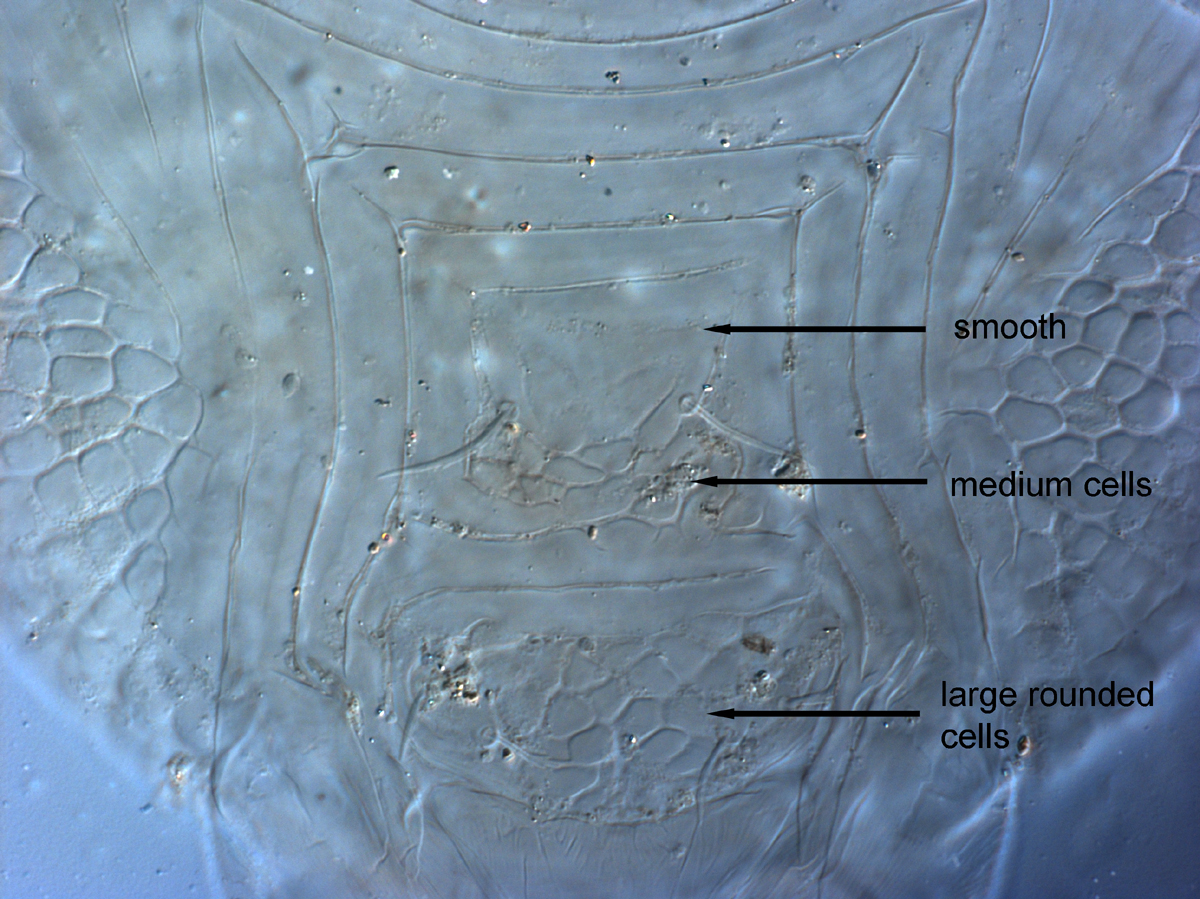Cenopalpus lanceolatisetae
|
Fig. 1. Cenopalpus lanceolatisetae adult female dorsum.
|
|
Fig. 2. Cenopalpus lanceolatisetae adult female dorsum.
|
|
Fig. 3. Cenopalpus lanceolatisetae adult female prodorsum.
|
|
Fig. 4. Cenopalpus lanceolatisetae adult female prodorsum.
|
|
Fig. 5. Cenopalpus lanceolatisetae adult female anterior dorsal opisthosoma.
|
|
Fig. 6. Cenopalpus lanceolatisetae adult female anterior dorsal opisthosoma.
|
|
Fig. 7. Cenopalpus lanceolatisetae adult female dorsal opisthosoma between setae d1 and e1.
|
|
Fig. 8. Cenopalpus lanceolatisetae adult female dorsal opisthosoma between setae d1 and e1.
|
|
Fig. 9. Cenopalpus lanceolatisetae adult female posterior dorsal opisthosoma.
|
|
Fig. 10. Cenopalpus lanceolatisetae adult female posterior dorsal opisthosoma.
|
|
Fig. 11. Cenopalpus lanceolatisetae adult female venter between legs III and IV.
|
|
Fig. 12. Cenopalpus lanceolatisetae adult female venter between legs III and IV.
|
|
Fig. 13. Cenopalpus lanceolatisetae adult female posterior venter.
|
|
Fig. 14. Cenopalpus lanceolatisetae adult female posterior venter.
|
Authority
(Attiah)Taxonomic history
Brevipalpus lanceolatisetae Attiah - original designation
Cenopalpus lanceolatisetae Pritchard & Baker 1958
Key characters
Adult female (Figs. 1, 2)
reticulate, large regular cells centrally; medium cells sublaterally (Figs. 3, 4)
prodorsal setae long, broadly lanceolate, heavily barbed (Fig. 3)
Central Opisthosoma
c1-d1: even reticulation, large regular cells (Figs. 5, 6)
d1-e1: reticulation becoming a series of short transverse folds (Figs. 7, 8)
e1-h1: series of short transverse bands becoming reticulation towards h1 (Figs. 9, 10)
Sublateral Opisthosoma
reticulate with regular medium cells, with smaller cells laterally (Fig. 8)
Dorsal Setae
c2, c3, d3, e3, f2, f3 > c1 > d1, h2 > e1, h1 (d1 and e1 often same length)
Venter
3a to 4a: cuticle more or less smooth, with extremely fine transverse striae (Figs. 11, 12)
4a to ventral plate: cuticle with even large rounded cells laterally; cuticle smooth centrally with extremely fine transverse striae (Fig. 10).
ventral plate: anterior cuticle smooth; posterior cuticle with medium cells (Figs. 13, 14)
genital plate: large rounded cells (Figs. 13, 14)
femur with 0 setae; genu with 1 dorsal seta; tibia with 2 setae; tarsus with 3 setae (sensory)
dorsal opisthosomal setae d1, e1, h1, h2 minute
remaining dorsal setae longer (v2, sc1, sc2, c3 > c2 > f3 > d3, e3, f2)
Distribution
Cyprus, Egypt, England*, Greece, Iran, Jordan*, Lebanon*, Libya, Portugal
* = confirmed specimens.
Hosts
Mainly Rosaceae: Cydonia oblonga (quince), Malus domestica (apple)*, Malus sylvestris (European crab apple)*, Prunus armeniaca (apricot), Pyrus communis (pear), Pr. domestica (plum)*, Pr. persica (peach).
In addition to: Punica granatum (pomegranate, Punicaceae).
* = confirmed specimens.
Remarks
This species is in the C. spinosus species group sensu Hatzinikolis et al. (1999).
This species is found in the young shoots and buds, and on both surfaces of host leaves.

